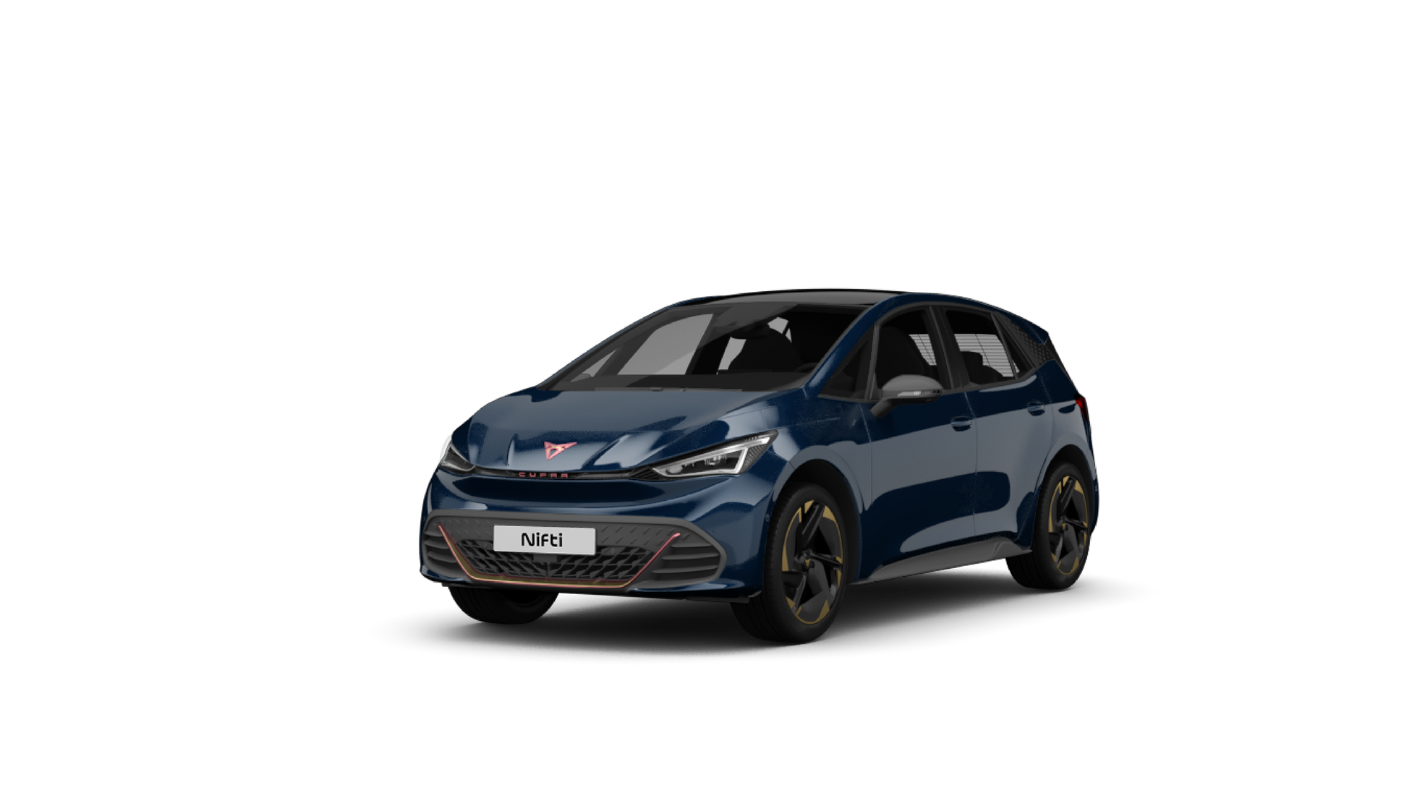Ready to lease your new car?
Browse our range and apply today!

If you’re new to the world of electric vehicles, there’s a lot of jargon and terminology that you might not be familiar with. To help you make the right decisions about your electric vehicle with Nifti, we’ll explain what these terms mean in more detail.
What are the most common types of electric vehicles?
Alternative fuel vehicle – Vehicles which run on fuel types other than petrol or diesel. There aren’t many alternative fuel vehicles in Ireland.
Battery electric vehicle (BEV) – Cars which run on battery power only.
Electric vehicle (EV) – Any vehicle which uses battery power, but this term is used mostly in reference to BEVs.
Fuel cell electric vehicle (FCEV) – EVs which use hydrogen fuel cells to power electric motors.
Full hybrid or ‘self-charging’ hybrid – Cars which mostly run on fossil fuels, but have small batteries which power them at lower speeds.
Hybrid car – Any vehicle which uses both battery power and a fossil fuel engine.
Mild hybrid – Hybrids where the batteries only ever assist the petrol motor, and which can’t run just on battery power.
Plug-in hybrid electric vehicle (PHEV) – Hybrids which can be charged at home or public charging stations and run on either battery or fuel power.
Plug-in vehicle (PiV) – Any EV with a plug socket.
Range-extended EV (REx) – EVs with small petrol or diesel motors, which help charge the battery.
Ultra-low emission vehicle (ULEV) – Cars with CO2 emissions of less than 75g/km.
What EV charging plug types do we have in Ireland?
CHAdeMO – Round, four-pin connectors. Used at rapid charging points and typically give less power than CCS.

Combined charging system (CCS) – EU standard connectors with two DC pins below a Type 2 connector.
Type 1 – Five-pin connectors with a clip for secure attachment to the EV.
Type 2 – Seven-pin connectors with a flat top edge. Provides three-phase power. Irish 3 pin – Standard plugs found in Irish homes, can be used to power EVs in an emergency.
What types of charging can we avail of in a Nifti electric vehicle?
Trickle Charging – The slowest type of charging, this is best reserved for long overnight charges at home. Trickle charging is either provided safely by de-rated dedicated charge points, or through a standard 3-pin plug, which lacks certain safety features.
Slow Charging – A stronger option for home charging, this allows for both top-up and overnight charging through a dedicated charge point. This 3.7kW home charger provides faster charging times than a 3-pin socket.
Fast Charging – Ideal for top-up charging, most fast charge points offer 7kW, ideal for keeping you going while out and about. Typically found in homes, workplaces and in public car parks where people typically spend roughly 40 minutes or more.
Rapid Charging – Typically used for en-route charging on long distance journeys, rapid chargers can also be used as occasional “caught short” chargers, particularly if available somewhere convenient. Rapid charging takes place from 43kW power and above. Maximum charging speed may be limited by your vehicle’s onboard charger and what it can receive.
What are the most popular electric vehicle concepts?
Contactless charge payment – The ability of some public chargers to let you pay using your contactless debit or credit card.
En-route charging – High-speed charging at service stations, carried out on unusually long journeys.
Grants – There are a number of grants available to EV buyers in Ireland. See our Nifti grants article for more information.
Home charging – Plugging your EV into its charger overnight to replenish the battery at home.
ICE – Internal combustion engine, used to indicate traditional petrol or diesel cars.
Kilowatt hour (kWh) – The energy transferred in one hour by 1,000 watts of power. EV batteries are measured in kWh.
RFID cards – Radio-frequency identification cards, used to pay for some public charging stations.
Range anxiety – A common worry about the possibility of your battery going flat while driving.
Rapid charge paradox – The idea that you spend more time waiting around for your EV to charge at the fastest chargers. At slower ones, you leave it charging while you go use the facilities.
Single-phase power – Power provided by standard Irish three-pin sockets.
Smart charging – Technology in your EV, which automatically regulates the way it charges.
Three-phase power – Power supplies found in commercial and industrial areas, providing 22kW AC charging.
Top-up charging – The practice of charging to keep your EV battery full rather than only charging when nearly empty.
Vehicle to grid (V2G): Releasing power from your EV back into the grid at high-demand times.

Browse our range and apply today!